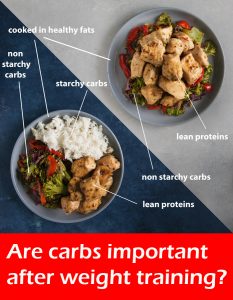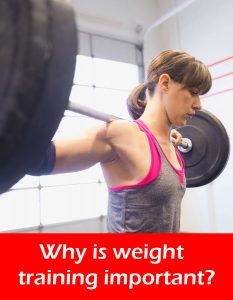A frequently asked question we get is how do you create a bodybuilding diet? This article teaches bodybuilders how to build their own bodybuilding meal plan.
Ok, so you want to get huge?!
All you have to do is make it to the gym, crank out reps until you get a sick pump, head home and get on with the rest of your day, right? If bodybuilding were only that simple.
Nutrition plays a very large part of recovery, growth and general fitness and without it your body won’t put on any lean muscle mass.
So, if you want to be a true bodybuilder, you’re going to change your lifestyle and develop a muscle building meal plan.
Don’t worry, it’s not as hard as it sounds. We’ll give you the complete breakdown on how to determine your dietary needs to build a muscular physique.
Determining Calories for your Bodybuilding Diet
Bodybuilding diets are constantly changing due to the increase of your muscle mass as well as the changing difficulty in your workouts.
If you increase your muscle mass and/or the time you spend weight training, you have to eat more. If you lose muscle and/or if you lessen the intensity level of your training, you need to eat less.
So how do you know if you’re building or losing lean muscle mass?
You measure of course. There are two main means that would work very well. The first is the good ole scale that sits gathering dust in the corner of your bathroom. You should monitor your weight to see if your goal to build lean muscle is causing an increase in bodyweight.

If the scale shows that your weight is staying the same (or going down) then it’s time to look at your diet and make healthy changes to create a high calorie bodybuilding diet.
If your weight is increasing, is it muscle mass or fat mass? If your stomach is getting larger then you might be eating too much. You can expect to put on some bodyfat when trying to put build muscle (especially if you’re eating a high calorie diet), but you want to monitor to make sure that dreaded fat percentage isn’t increasing too much.
Another good tool to track your progress is a set of body fat calipers. Using calipers every two weeks will provide you an idea of exactly what is happening. If your lean body mass is going down, you might want to increase the amount of calories that you eat. On the contrary, if body fat is increasing, you might want to decrease your food consumption. Finding the sweet spot where you can gain muscle without fat is every bodybuilder’s dream.
All good gyms will have a set of calipers and as long as the same person does the measurements every time you should be able to get a true reading as to what exactly is happening. Once you have obtained the amount of total millimeters and your bodyweight, the chart that comes with the calipers will show what your bodyfat percentage is.
Now comes the clever bit. If you take your bodyweight in pounds and times it by the bodyfat percentage, then you will be able to figure out your total level of bodyfat. Then you subtract this number from the total bodyweight and that will give you a figure for your fat free mass. The figure is not all muscle (technically it includes internal organs, bones etc.) but we’ll use the figure as muscle for our calculations.
The two figures you have just worked out (total bodyfat and fat free mass) should be written down and kept. Then next time you have your measurements done you can compare the two and see if your bodyfat percentage has gone up.
You will find that if your food intake is right, then with proper amount of exercise, your fat free mass will go up and your total bodyfat will go down. But if you’re not eating enough, you will find that your fat free mass (muscle) is going down and your bodyfat goes up, which is definitely not what you want!
Bodyfat Calculations
Example of calculations of bodyfat, and fat free mass, using the weight as 200lb, and a bodyfat percentage of 21%.
| Bodyfat Calculations Example | |
|---|---|
| Bodyweight: | 200lbs |
| Bodyfat Percentage: | 21% |
| The calculations… | |
| Step1. Bodyweight x bodyfat percentage = lb bodyfat. (200 x 0.21 = 42 lb bodyfat) |
|
| Step2. Bodyweight – 42 = fat free mass (200 – 42 = 158) (This figure is the total amount of fat free mass). | |
| So now we know… | |
| Bodyweight: | 200lbs |
| Bodyfat Percentage: | 21% |
| Fat Free Mass: | 158lbs |
The next time you have the bodyfat percentage calculated, ideally you want to see that the level of fat free mass has gone up and the total bodyfat has stayed the same or has gone down. That is the ideal situation. But sometimes it doesn’t happen and the fat level increases and the fat free mass decreases.
The reason that the fat free mass decreases is that possibly you are losing muscle, because you don’t eat enough food for the amount of work/training you are doing.
Ok, I hear you saying, what if I train at home? Well in this situation we can use the old favorites, a set of scales and the mirror. You know, the one you use to admire yourself in!
The bathroom scales should show an increase in your bodyweight, if it’s not going up then you’re not eating enough. If the mirror is showing an increase of bodyfat around your midsection, then you are eating too much.
So how do we set up a bodybuilding meal plan with the right nutrition for ourselves? First, we need to know how many calories we should eat in a day, on top of the calories required for our body at rest we need to add into the diet calories we expend on daily activities and our training.
Use This Calculator to work out your calories per day. As a basic starting point, we use a ratio of protein, carbohydrates, and fats (PCF) of 30% protein, 50% carbohydrates and 20% fats. Remember that protein and carbohydrates contain 4 calories per gram, fat contain (a high) 9 calories per gram.

An example: The calculator has given us a value of 2900 calories per day, so use the following calculation to find the PCF ratio:
- Protein: 30% of 2900 = 870 calories / 4 = 217.5g per day.
- Carbohydrates: 50% of 2900 = 1450 calories / 4 calories = 362.5g per day.
- Fat: 20% of 2900 = 580 calories / 9 = 64.4g per day.
So now you know exactly how much food you require per day. Now you will need to determine how many meals you’d like to eat during the day and find out how much food you require (approx) per meal.
You should be using frequent feedings to promote satiety, increase muscle protein synthesis from regular consumption of high protein meals1, and provide yourself with enough energy during the day.
As such you should divide the grams of food given above into as many meals per day as you can comfortably consume and digest, usually between 4-6 meals per day.
So to work the above amount of grams of food per day you use the following calculation:
- Total meals required per day 6. (Figures rounded off)
- Protein: 217.5g / 6 = 36g of protein per meal x 6
- Carbohydrates: 362.5g / 6 = 60g of carbohydrates per meal x 6
- Fat: 64.4g / 5* = 13g of fat per meal x 5*
* Note: In the after training meal you want the nutrients to be digested quickly and fat can delay the digestion of the meal, so fat is omitted in this meal only.
* Below are listings of the best foods for our nutrition plan, and for our recovery and growth from training. The amounts have been put as per ounce (28g) of each food for easier calculation.
* So to work out a meal you have to look at the lists given below and choose what foods you want to eat in a particular meal to give you the amounts required per meal.
Example: Evening meal.
(Requirements, good sources of: protein 36g, Carbohydrates 60g, Fat 13g)
| Food | Protein(g) | Carbohydrates(g) | Fat(g) |
|---|---|---|---|
| Beef (sirloin grilled) 3oz | 27.9 | 0.0 | 8.4 |
| Brown rice (cooked)6oz | 4.2 | 38.4 | 1.2 |
| Carrot (2 large) | 2.0 | 14 | 1.2 |
| Cabbage (2oz) | 0.8 | 3.2 | 0.0 |
| Green beans (2oz) | 1.0 | 4.0 | 0.0 |
| Totals: | 35.6 | 60 | 10.8 |
So you can see by the above meal that you are very close to the total amount that is required per meal, you can eat larger portions (for extra energy) for the main meals like breakfast, lunch and evening meal, and eat smaller meals for mid morning, mid afternoon, and supper time. Choose whichever you are more comfortable with for your own bodybuilding meal plan.
Also note that the example meal contains a balanced selection of healthy food groups including a lean meat, three different vegetable sources, and a good carb source to provide energy for the body.
Use the charts below to calculate your meals for your given calculations, you will find that after you have done it a couple of times how easy it is, and you will also get to know what portion size you require for that given amount of food.
Once you have your food sorted out, give the plan two weeks for the body to adapt to your new meal plan.
Adapt your diet accordingly by either adding or subtracting calories depending on the results you have noticed (gaining too fast, too slow, or noticing a significant increase in your weight and the level of body fat).




